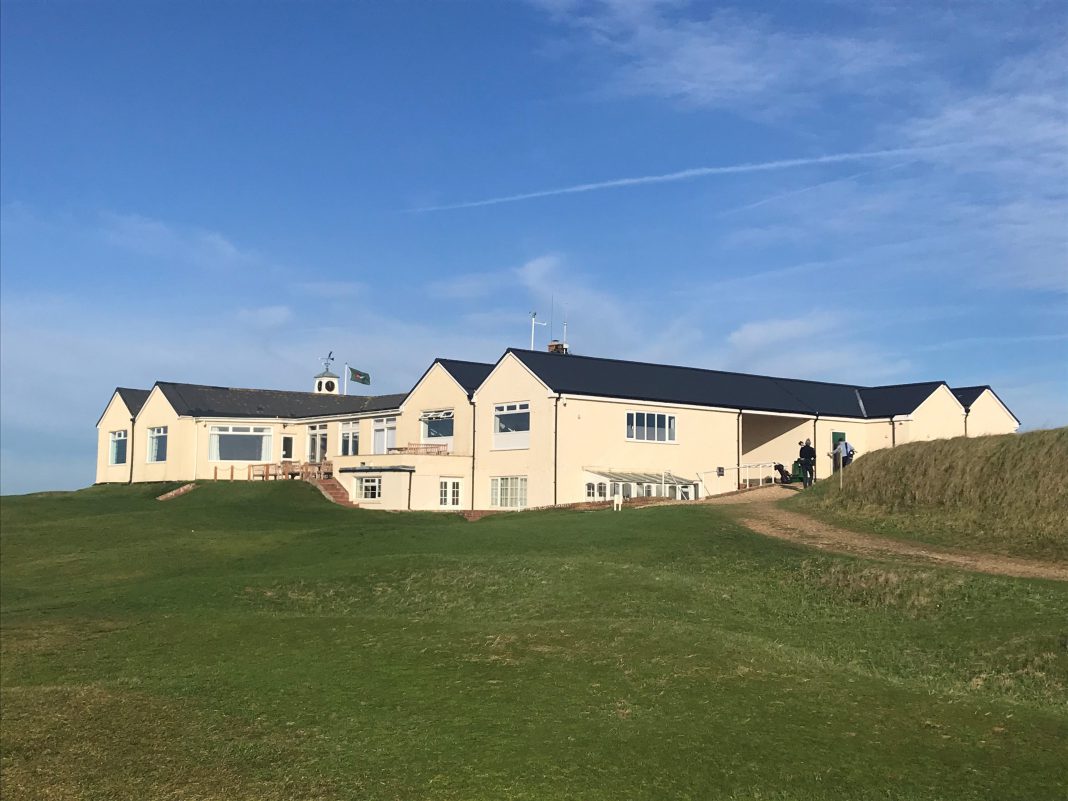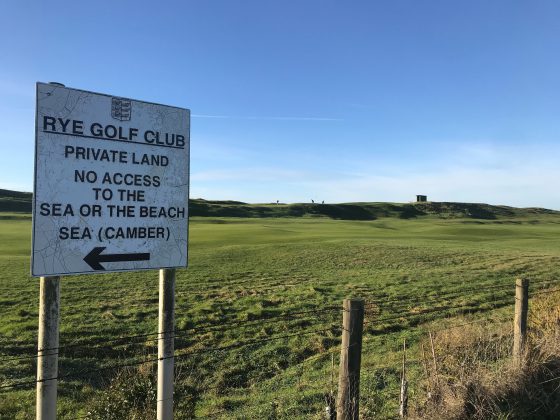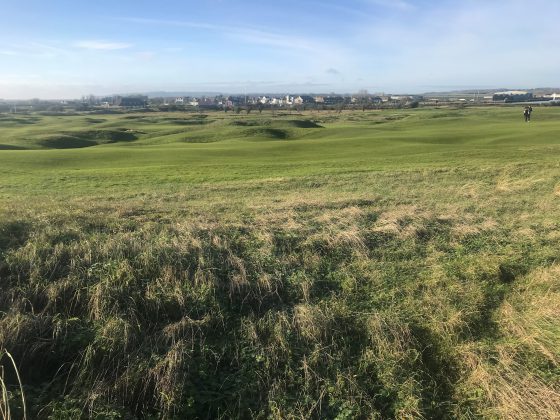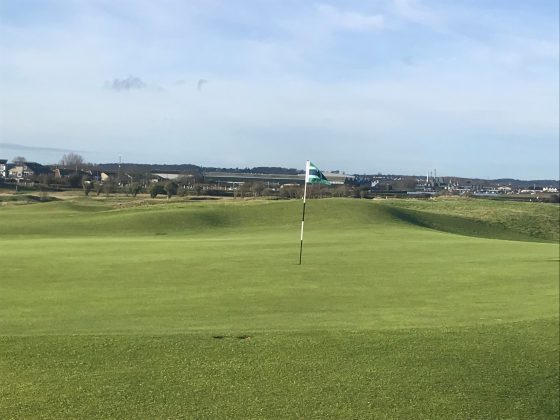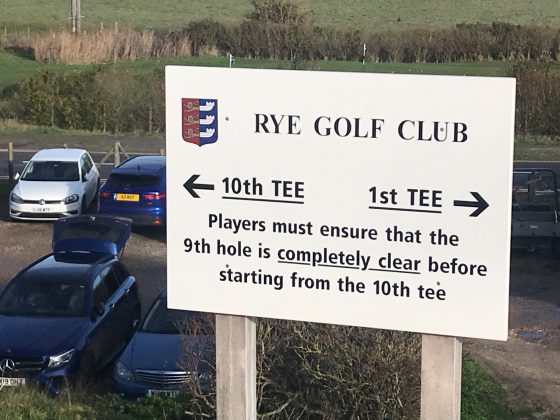Rye Golf Club was the focus of much attention over the course of last weekend, blessed with, on the whole, dry but windy weather and was once again host to the President’s Putter, an annual golf competition contested between former and current Blues golfers from Oxford and Cambridge universities. When I visited the club last Thursday, the course looked in spectacular shape despite all the recent wet weather and, judging by the number of vehicles in the carparks, the competition was very well attended.
The first round of the four-day competition started last Thursday, January 5 with the final being played on Sunday, January 8. The winner was confirmed as JWE Giddins of Fitzwilliam College, Cambridge who beat MD Cooper of Worcester College, Oxford in the final.
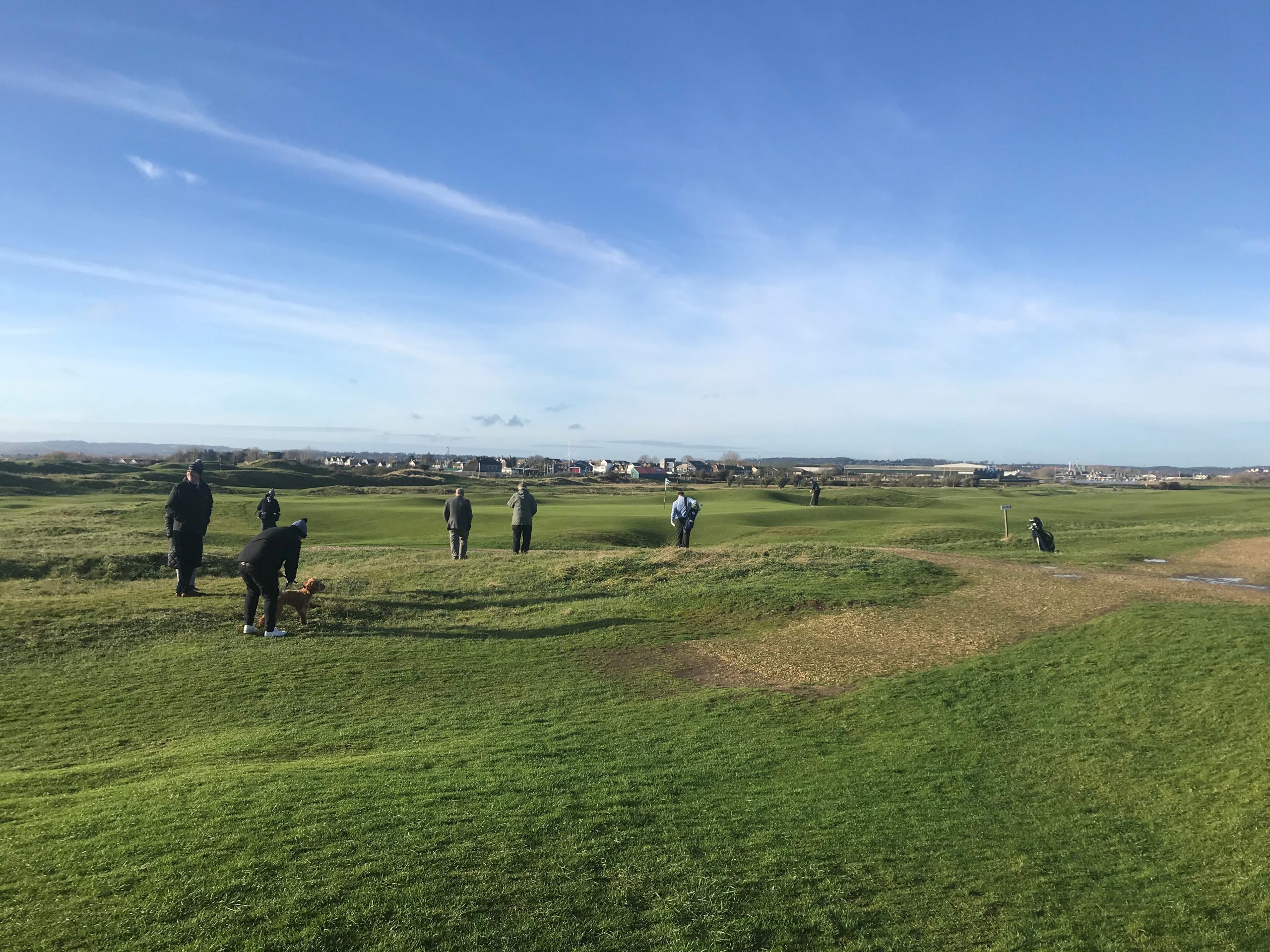
History of The President’s Putter
On a historical note, the second annual report of the Oxford and Cambridge Golfing Society’s activities issued in 1900 by the secretary, ACM Croome, contained two comments of great significance. First, “the committee of the Rye Golf Club have with great kindness suggested that the society should regard the Rye course as its home green”. A little further down the following appears: “It has been suggested that the society should have a meeting at Rye annually at which a tournament for the championship of the society might be played. I shall be glad if members will communicate to me their views about this suggestion. The best time for such a meeting would probably be the earlier part of January.”
Sadly, there is no record of reactions to this proposal and not until the closing months of 1919 was there any further mention of such a tournament. Then, on November 15, 1919, there took place a foursomes match at Addington between “age” and “youth” followed by a dinner at the Criterion and soon after this, an approach was made to the Rye Golf Club, which led to the first mention of the event that later turned into “the Putter”. It is contained in the minutes of the Rye Golf Club Committee meeting held on 13th December 1919. “A request has been received from the Oxford and Cambridge Golfing Society to hold a two-day meeting at some date in January next.”
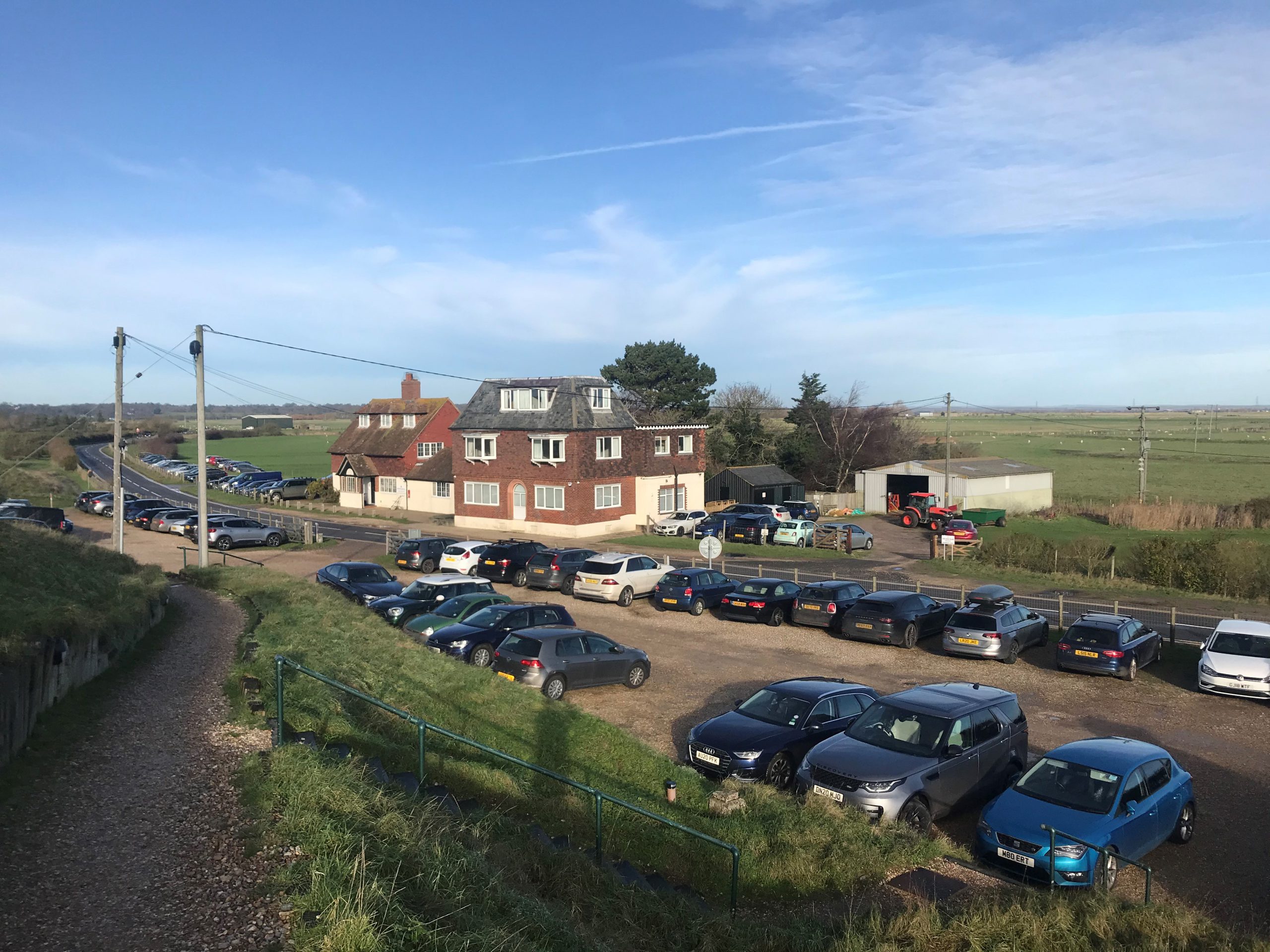
The club responded with an offer of three days, January 16, 17 and 18, 1920. On January 17, The Times reported “that the Oxford and Cambridge Golfing Society’s tournament was begun at Rye yesterday: there were fifteen players and match-play on level terms was decided upon.”
The Oxford and Cambridge Golfing Society, founded in 1898, is one of the oldest golfing societies in the world. Known simply as the society and carrying the motto ‘serious fun’, the majority of its 750 members gained their blue by taking part in the annual university match. The society holds its annual meeting each January at Rye, where members compete for the President’s Putter. In addition, the society plays some 40 matches a year, always in foursomes format.
A book entitled Deadly Putter by Ted Dexter OBE (former England international cricketer) and Clifford Makins, centres around Rye golf Club. This information was forwarded to me by local Rye resident Vic Vicary, who has been a member of the Rye Artisans Golf Club for 62 years, joining as a junior member aged just 14. Vic’s brother, Ernie, was also a member for 63 years. Between them they have many stories to recount through their lifetime of loyalty to the club.
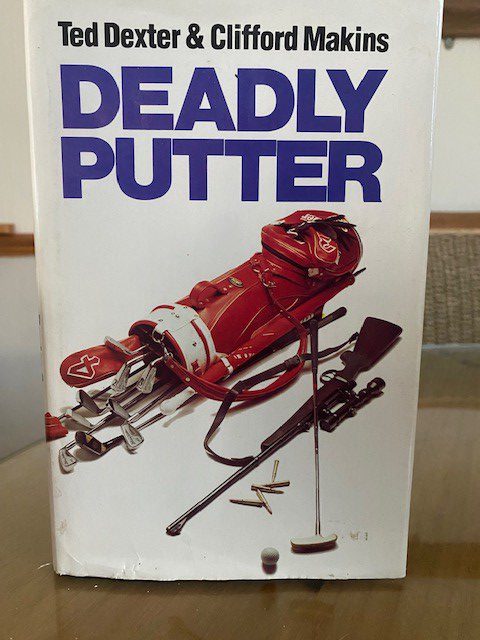
History of Rye Golf Club
In the early 1890s, golfers locally discussed the possible creation of a golf course at Camber and following a meeting at the George Hotel in Rye on November 28, 1893, decided that a golf club should be formed. Work started immediately, a course was laid out and the first competition took place in February 1894.
The Rev JL Bates, rector of Iden, was an active chairman of a committee coordinating the construction of the course and organising the newly formed club. HS Colt, a solicitor, was elected as the first captain and he designed 18 holes in 1895, which became the permanent course. This set him on a new career as a golf course designer of national and international renown.
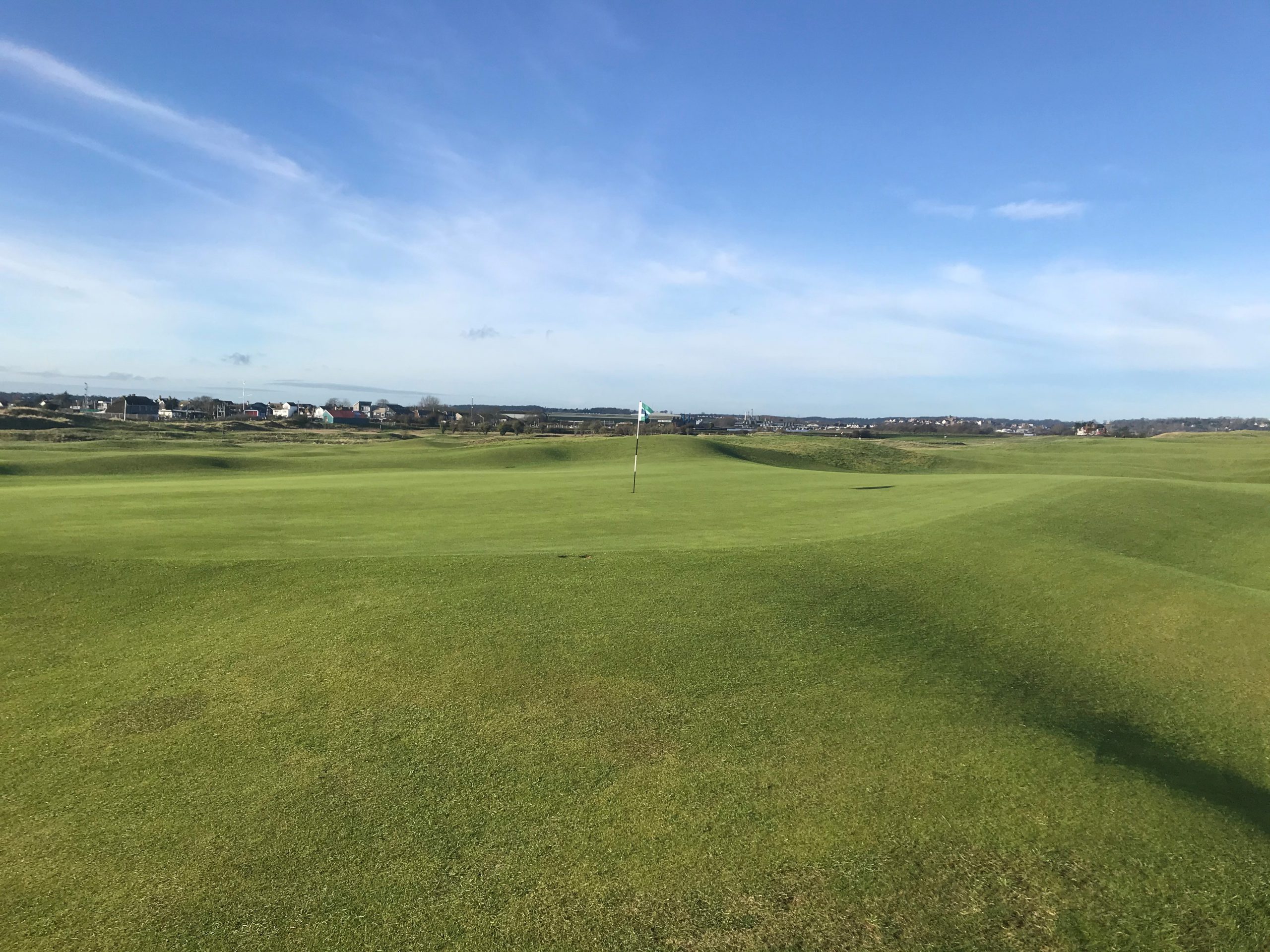
The adjacent Royal William hotel provided accommodation and meals until a temporary clubhouse was built in 1894. The ‘temporary’, much altered, building is still in use today.
Before the days of the automobile transport to the club was solved by the opening of the Rye and Camber Tramway in 1895. The 1¾ mile journey from Rye to the Golf Links station took 8½ minutes and cost 6p return (first class). However the steam tram lost passenger appeal to the motor car in the mid-twenties and, after use by the Admiralty during the second world war, the company was quietly wound up.
By 1905 there were 430 men and 60 lady members. The ‘temporary’ clubhouse was expanded until, by 1911, the outline of the building had assumed its current, much-loved shape. Simple fare was offered in the clubhouse: a cold luncheon supplemented by buttered eggs became the club’s speciality.
In 1907, redesign of the course took advantage of the receding sea by using land to the south of the sandhills and lengthening Colt’s original layout. Two holes were still across the road and three holes remained on land beyond the coastguard cottages.
The club was now flourishing; even the first world war did not check its progress but the second world war affected the club far more. Anti-invasion measures saw major defences built on the first nine; the Old Billy was requisitioned; eight holes of the back nine remained in play but, in 1944, a flying bomb badly damaged the clubhouse.
The club got going again and the course was restored from extensive damage and underwent various changes from the pre-war layout. A large dune was levelled to create the green and provided a spectacular hole. The old course is reputed for the quality of its short holes giving rise to the well-known wry observation that “the hardest part about Rye is the second shots on the short holes”.
The land beyond the coastguard cottages was sold and the club’s finances received a boost when increased income from gravel was negotiated. The Oxford and Cambridge Golfing Society ‘Putter’ competition was played again in 1947 and the clubhouse was eventually repaired and enlarged.
Automated irrigation on the tees and greens was introduced in the 1960s. This transformed the greens and enabled play throughout the summer. To provide security of water for the tees and greens, a water storage reservoir, called “Wenway Pool” was constructed in 1997. It is located on the far side of North Point lake on land owned by the club.
The land which now forms the Jubilee course used to flood through a gap in the sea dunes at times of very high water. The gap was closed in the 1960s and this enabled the nine-hole, Jubilee Course, designed by Frank Pennink, to be built and opened in 1977.
In the 1990s the “Old Billy” (the local affectionate name for what was the Royal Willian Hotel on the opposite side of the road from the clubhouse) was renovated to provide “Dormy” facilities of two flats and three en-suite bedrooms for use by members and guests in addition to the staff accommodation on the ground floor.
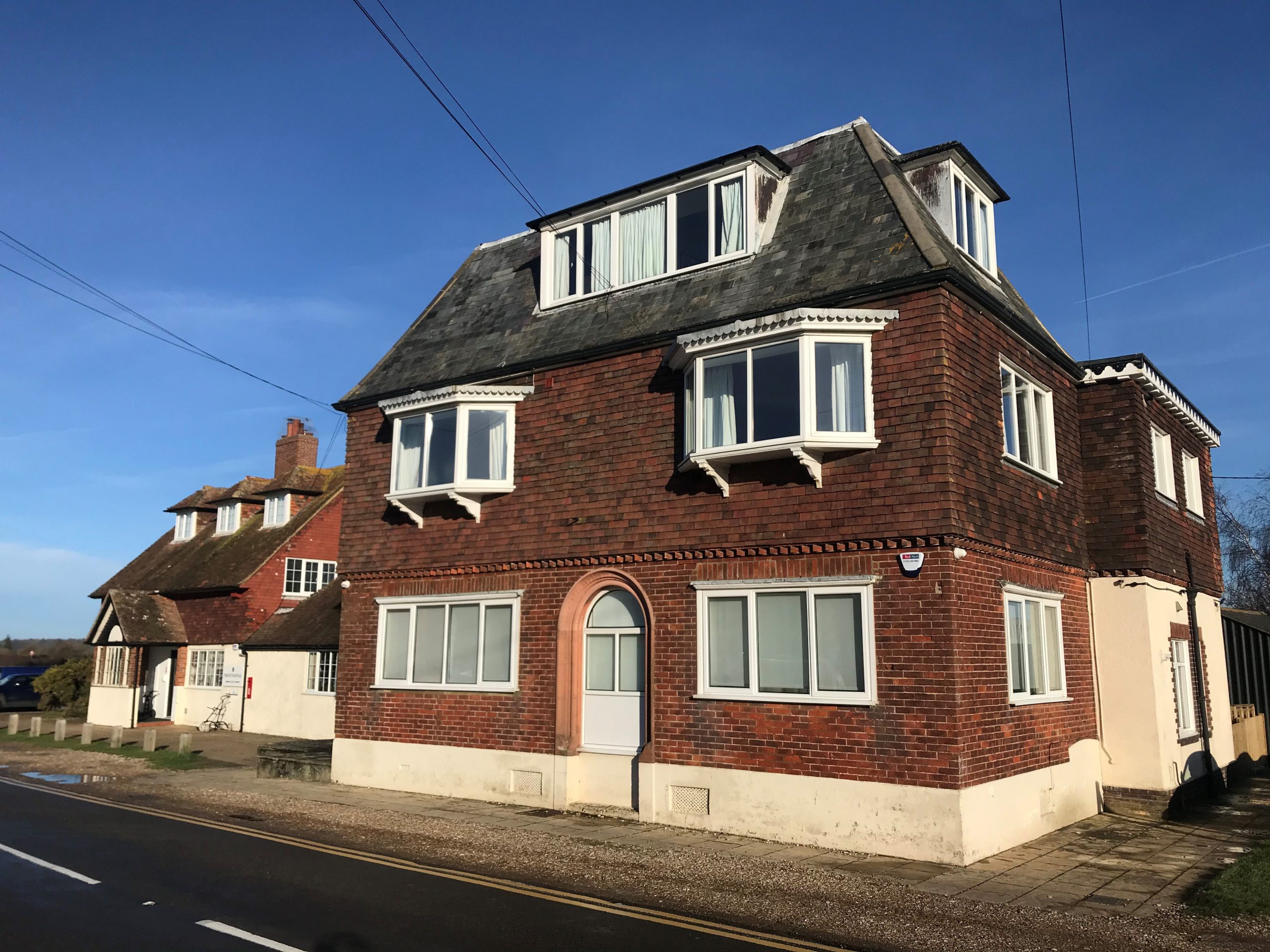
On the old course new tees, up to 50 metres behind the existing back tees, were added on several holes. This then comprises a championship course with designated blue tee markers as an attempt to mitigate the challenge of modern golf balls and clubs which give much greater length.
The surrounds to the 17th hole were reshaped, a new tee and an additional fairway bunker were added to the 12th hole in 2010 and in 2015 a fully automated fairway irrigation system was installed on the Old course.
The Jubilee course often flooded and was out of play during a rainy winter so a drainage scheme was designed and installed in 2001/2002. At the same time the earthworks were carried out for five new holes and two holes were abandoned (one becoming a practice area) all to a design by Donald Steel & Co. The new holes were opened for play in May 2005 providing two loops of 9 holes with 12 holes in total of which six holes are played twice; three from different tees. As part of this upgrade of the course an automated irrigation system was installed for the greens and tees.
To meet a growing demand in the 2000s, golf buggies were permitted for use on the Jubilee course. Storage for two 2-person buggies was provided by converting part of the old Tram Shed.
A review of the Jubilee course was carried out in 2013 which resulted in various amendments to many of the holes to make them more playable, including a new green for the 8th hole which used to share the 17th green.
The Jubilee course now serves as a first class alternative to the old course and has enabled all the matches in the Oxford and Cambridge Golfing Society Putter Competition to be played at Rye.
The clubhouse has been modified to keep up with the requirements of a thriving club whilst maintaining its unique character. First, the north end was rebuilt to provide a larger dining room with a vaulted ceiling and a dedicated meeting room under it. At the same time a new entrance hall was created and the Secretary’s office was enlarged.
The south end was modified in 2020/21 to provide a larger men’s locker room with vaulted ceilings by building over the lower floor ladies’ locker room. The trolley shed was incorporated to provide space for upgraded showers and the whole locker room, including the lavatory area, was completely refurbished.
The coastguard cottages, including Chief Coastguards, all of which provide staff accommodation, located behind the 3rd green were modernised and a little later the adjacent Admiralty Cottage was also upgraded.
The courses, which are reputed to be among the very best winter courses in the British Isles, provide year-round challenging links golf of the highest standard. It is a two-ball club, foursomes and singles, played briskly and in most weathers.
These extracts about the history of Rye Golf Club were adapted from the Clubs website www.ryegolfclub.co.uk where further information on membership and use of the club can be found. Alternatively you can contact the club by calling 01797 225241 or by email on links@ryegolfclub.co.uk.
Image Credits: Nick Forman , Vic Vicary .



